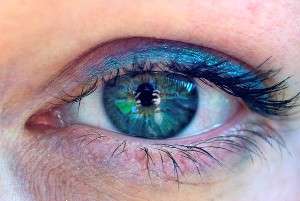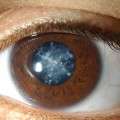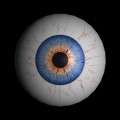DIABETIC RETINOPATHY
What is Diabetic Retinopathy
Diabetes is a chronic, systemic disease, in which the body does not use and store sugar properly. It results in many health problems; diabetic retinopathy is one of them. In this complication of diabetes, the eye’s retina is damaged because the system of blood vessels nourishing the front surface of the light-sensitive retina is weakened. Fragile, new blood vessels form in the retina. These can then leak fluid into the retina, causing it to swell; this is called macular edema. The vessels can also haemorrhage (bleed) into the vitreous (the jelly part of the eyeball). Both of these processes can be disastrous for vision. Diabetic retinopathy is the leading cause of blindness among America’s working-age population.
There are two types of diabetes: Type-1 (insulin-dependent) is an autoimmune disease that usually begins suddenly in childhood or adolescence. Type-2 (non-insulin dependent) accounts for over 90 percent of diabetes cases in this country. Type-2 is no longer called “adult-onset diabetes”, because this disease now affects increasing numbers of children. The reason for this is that type-2 diabetes is usually triggered by obesity, and all age groups in our population are becoming heavier, on average.
Nearly all patients who have diabetes and are treated with conventional glucose control get some early changes (called non-proliferative retinopathy) in their retinal blood vessels after several years. Many diabetics then proceed to symptomatic, proliferative diabetic retinopathy, in which abnormal, new blood vessels cause trouble. After 40 years, about 60 percent of diabetics have this serious complication.
what kind of symptoms will i have?
The early stages of diabetic retinopathy may not be noticed. However, in time, the new blood vessels can leak (causing blurred central vision; this is called macular edema or swelling) and/or bleed (causing dark spots due to haemorrhages in the retina). The spots can be anywhere in your visual field. Another common eye complication of diabetes is cataracts.
.
can i prevent it?
No-one can now prevent the start of type-1 diabetes (although there is lots of research in this field). But there is a nearly sure-fire way to prevent people from suffering from type-2. Being overweight (having a body-mass index over 25) is a huge risk factor for diabetes, and being obese (BMI over 30) nearly ensures getting the disease eventually.
If you already have diabetes, the best way to prevent its complications, including diabetic retinopathy, is to keep your blood-sugar level in the normal range. Take your prescribed medicines and stick to your diet as instructed even if you feel well, get enough exercise, keep your blood pressure from getting high, and don’t smoke. A recent study, conducted by the National Institute of Diabetes and Digestive and Kidney Diseases, found that tight control of blood-glucose levels can greatly reduce all the long-term complications associated with diabetes, which affect the eyes, kidney, heart, and nerves.
It is important to have your eyes examined regularly by an eye-care professional, who will get a good view of your retinas after dilating your pupils. Frequent eye exams are especially valuable if are a diabetic or a close relative of one. Diabetics should see their eye doctors at least once a year, starting when they are first diagnosed with the disease. This is because the doctor can see any retinopathy early enough to treat it before there is vision loss. Pregnant women with diabetes should schedule an appointment in the first trimester, as retinopathy can progress very quickly during pregnancy.
is there any treatment for diabetic retinopathy?
The treatment of diabetic retinopathy is a success story for clinical research. A simple laser treatment is effective in sealing off the new vessels that form in proliferative diabetic retinopathy. In the most common treatment for proliferative retinopathy, called panretinal photocoagulation, the laser beam is focused on all parts of the retina except for the macula. To treat macular edema, the laser is aimed directly on the damaged blood vessels (as determined from angiography). So, anyone with diabetes (either type) should have frequent visits to an eye-care professional, in order to catch new blood vessels as they form, and seal them before devastating leakage or bleeding occurs into the eye. Several laser treatments may be necessary, over time. Laser surgery cannot cure diabetic retinopathy, and cannot always prevent further vision loss. In advanced cases of retinopathy a vitrectomy, to remove the blood-filled vitreous, may be necessary. The treatment of diabetic cataracts is surgical removal, as is the case for age-related cataracts.







